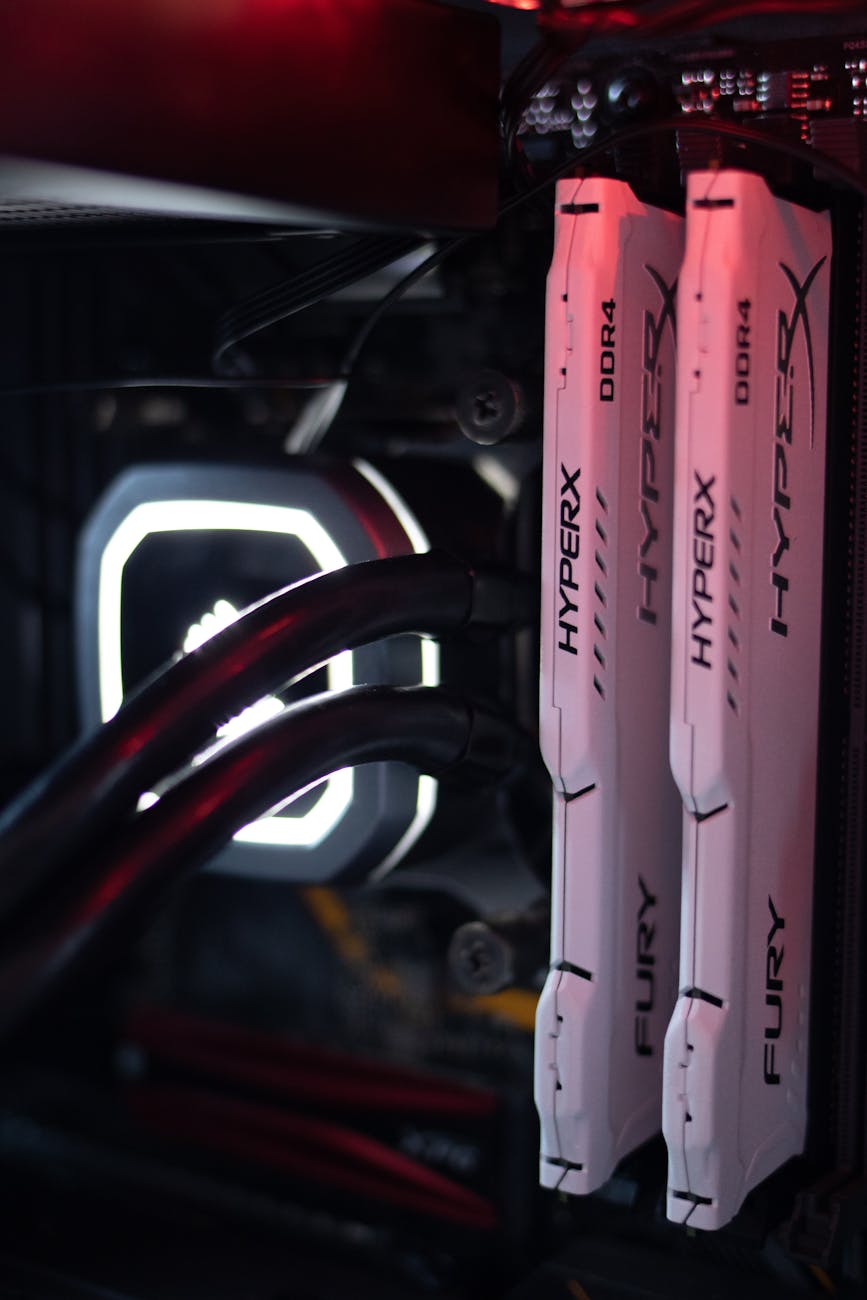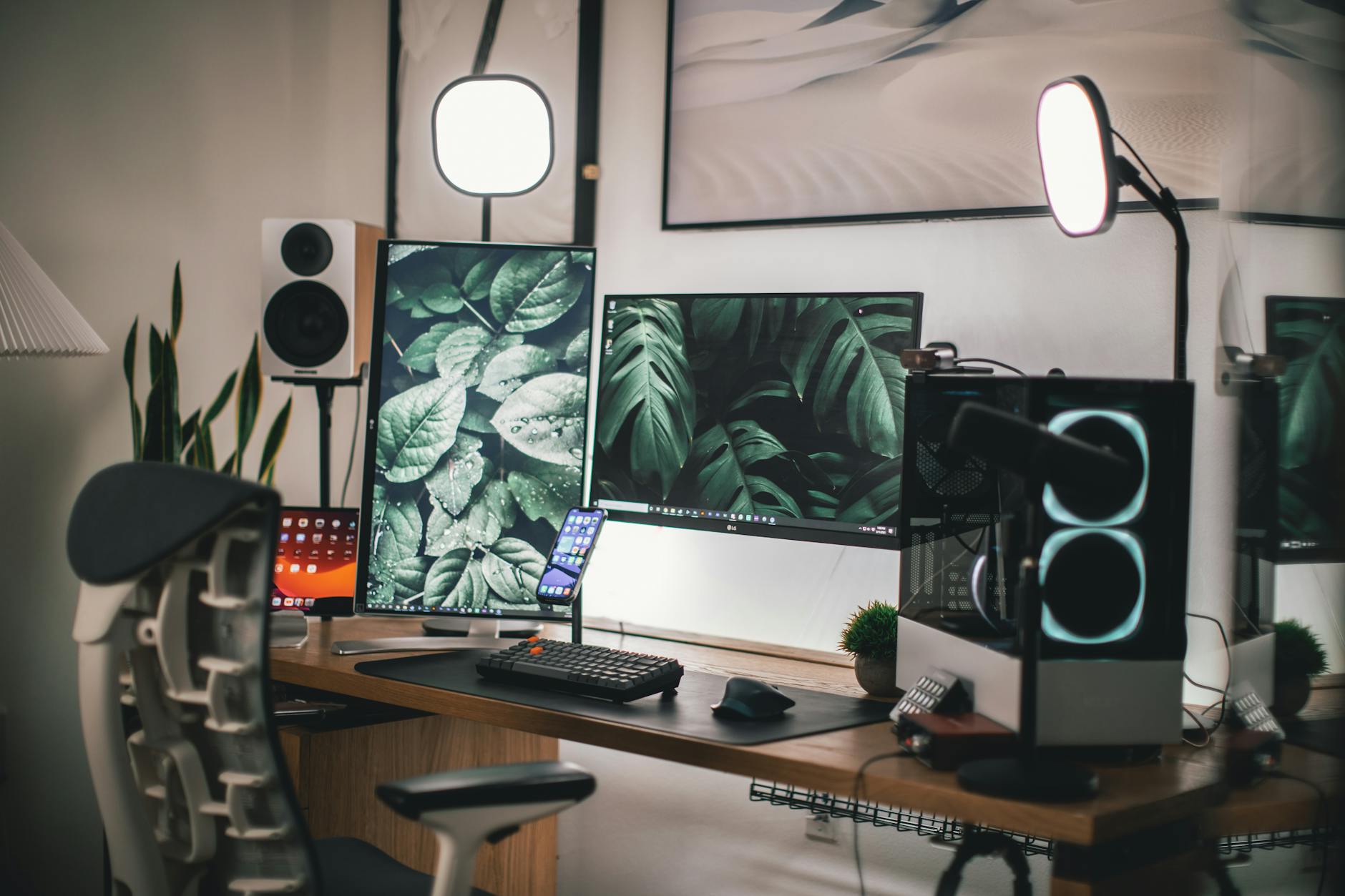The allure of high-fidelity gaming, demanding titles, and competitive esports often leads to a single, powerful solution: the gaming PC. But embarking on the journey of building, upgrading, or even configuring a budget-friendly setup can feel daunting. This guide is designed to demystify the process, offering a comprehensive roadmap for enthusiasts of all levels. We’ll explore the fundamental components that make a gaming PC tick, delve into the strategic art of upgrading your existing rig to meet future demands, and provide practical advice for crafting a potent gaming experience without breaking the bank. Whether you’re a seasoned builder or a curious newcomer, prepare to unlock the secrets to your perfect gaming machine.
The Foundation: Understanding Your Gaming PC’s Core Components
Before diving into building or upgrading, a firm grasp of the essential components is paramount. Each part plays a crucial role in delivering smooth frame rates and immersive gameplay. At the heart of your gaming PC lies the Central Processing Unit (CPU), the brain that handles all calculations. For gaming, core count and clock speed are key considerations, with Intel Core i5/i7/i9 and AMD Ryzen 5/7/9 being popular choices. Complementing the CPU is the Graphics Processing Unit (GPU), arguably the most critical component for visual fidelity. This powerhouse renders all the graphics, and its VRAM (Video RAM) capacity directly impacts the resolution and texture quality you can achieve. Nvidia GeForce RTX and AMD Radeon RX series are the go-to for gamers.
Next, we have the Random Access Memory (RAM), which acts as short-term memory for your system, allowing for quick access to frequently used data. For modern gaming, 16GB is considered the sweet spot, with 32GB offering headroom for more demanding titles and multitasking. The Motherboard acts as the central nervous system, connecting all other components. Its chipset determines compatibility with CPUs and RAM, and features like PCIe slots for the GPU and M.2 slots for fast storage are important. Storage solutions are vital for game loading times; Solid State Drives (SSDs), particularly NVMe SSDs, offer significantly faster performance than traditional Hard Disk Drives (HDDs). Finally, the Power Supply Unit (PSU) provides electricity to all components, and it’s crucial to choose one with sufficient wattage and a good efficiency rating (like 80 Plus Gold) to ensure stability and longevity.
Strategic Upgrades: Extending Your Rig’s Lifespan
Even the most powerful gaming PC will eventually show its age as new games demand more resources. However, a strategic upgrade path can significantly extend your rig’s useful life and keep you in the gaming loop without needing a complete overhaul. The most impactful upgrade, and often the most noticeable, is typically the GPU. If your current graphics card is struggling to hit acceptable frame rates or is unable to handle newer games at your desired settings, upgrading to a more powerful card can breathe new life into your system. Always ensure your chosen GPU is compatible with your motherboard’s PCIe slot and that your PSU can adequately power it.
The CPU is another component that can offer substantial performance improvements. If you’re experiencing CPU bottlenecks (where your CPU is holding back your GPU), upgrading to a faster processor can unlock more potential. This often requires a new motherboard as well, depending on the CPU socket generation. RAM upgrades are generally more straightforward and cost-effective. If your system has only 8GB of RAM or is frequently maxing out your current modules, increasing to 16GB or 32GB can dramatically improve multitasking capabilities and reduce stuttering in games that utilize large amounts of memory. Lastly, consider upgrading your storage to an SSD if you’re still relying on an HDD. The difference in game loading times and operating system responsiveness is staggering.
Budget Gaming PC Setups: Maximizing Value
Achieving a capable gaming experience doesn’t always necessitate a hefty investment. Building a budget gaming PC involves smart component selection and prioritizing what truly matters for your gaming needs. The key is to find the best performance-per-dollar ratio. This often means looking at mid-range CPUs and GPUs that offer excellent value. For example, a recent generation AMD Ryzen 5 or Intel Core i5 paired with an NVIDIA GeForce RTX 3060 or AMD Radeon RX 6600 XT can provide a solid 1080p gaming experience at high settings.
When building on a budget, consider purchasing components during sales events or looking for refurbished parts from reputable sellers. A balance between price and performance is crucial. For instance, a slightly older generation high-end GPU might offer comparable performance to a new mid-range card at a lower price point. Similarly, opting for 16GB of DDR4 RAM instead of the latest DDR5 can save significant money without a drastic performance hit in most gaming scenarios. Don’t underestimate the importance of a reliable PSU, even on a budget; a poorly chosen unit can lead to instability. Consider these budget-friendly component pairings:
| Component | Budget-Friendly Option (Example) | Approximate Price Range (USD) |
|---|---|---|
| CPU | AMD Ryzen 5 5600G / Intel Core i5-12400F | $120 – $180 |
| GPU | NVIDIA GeForce RTX 3060 / AMD Radeon RX 6600 XT | $250 – $350 |
| RAM | 16GB DDR4 (3200MHz) | $40 – $60 |
| Storage | 500GB NVMe SSD | $40 – $60 |
| Motherboard | B550 (for AMD) / B660 (for Intel) | $90 – $130 |
| PSU | 550W – 650W 80 Plus Bronze | $50 – $70 |
| Case | Basic ATX Mid-Tower | $50 – $80 |
For storage, a fast 500GB NVMe SSD is a great starting point, offering quick game loads. While a larger SSD or a secondary HDD for less frequently played titles can be added later. The case and motherboard selection should focus on functionality and compatibility rather than aesthetics to keep costs down.
Putting it all together: The Build Process and Beyond
The physical act of building a gaming PC, or performing an upgrade, can be a rewarding experience. Patience and careful attention to detail are key. Familiarize yourself with your chosen components and their respective manuals. Most modern motherboards have clear labels for where each component should be installed. Start by installing the CPU and RAM onto the motherboard, then mount the motherboard inside the case. Next, install the GPU into the primary PCIe slot, followed by storage devices. Connect all power and data cables, ensuring they are routed neatly for good airflow. Finally, connect your peripherals and boot up your system. After the hardware is assembled, the operating system installation and driver updates are crucial for optimal performance. Regularly updating your GPU drivers, in particular, can unlock performance gains and fix bugs in newly released games.
When planning a build or upgrade, consider your primary gaming resolution and refresh rate. Targeting 1080p at 144Hz has different hardware requirements than aiming for 1440p at 165Hz or 4K at 60Hz. Research benchmarks for the games you play most frequently with the components you’re considering. Online communities and review sites are invaluable resources for comparing real-world performance. Finally, don’t forget the peripherals! A responsive gaming mouse, a comfortable keyboard, and a high-refresh-rate monitor can significantly enhance your overall gaming experience and should be factored into your budget where possible.
In conclusion, the world of gaming PCs, from building from scratch to strategic upgrades and budget-conscious setups, is accessible with the right knowledge. We’ve explored the foundational components like the CPU, GPU, and RAM, emphasizing their individual roles in delivering a fluid gaming experience. We then transitioned into the art of upgrading, highlighting how focused component swaps, particularly the GPU, can revitalize existing systems. Finally, we delved into crafting budget-friendly setups, demonstrating that impressive gaming performance can be achieved without astronomical costs through smart component choices and value-driven purchasing. By understanding these principles and applying them to your specific needs and budget, you can confidently embark on your journey to owning a gaming PC that delivers precisely the experience you desire, whether it’s conquering the latest AAA titles or dominating the esports arena.
Image by: Athena Sandrini
https://www.pexels.com/@athena


